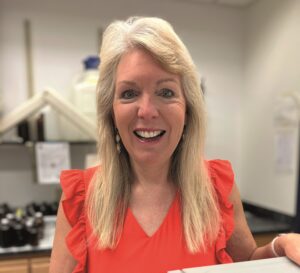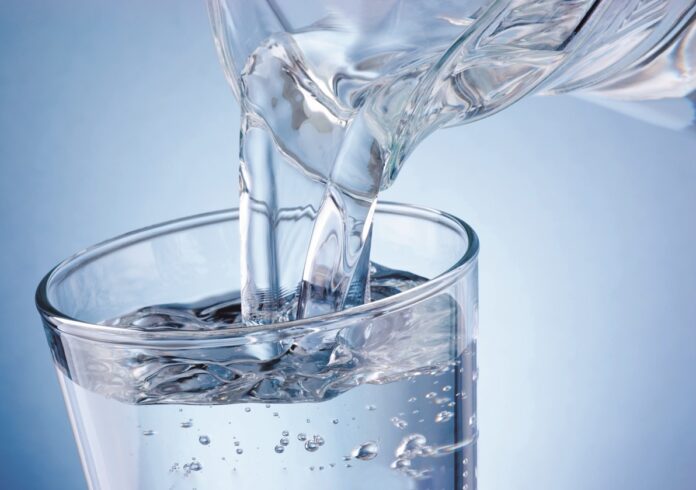
Professor Susan Richardson, from the University of South Carolina, USA, gave a keynote at IWA’s 13th Micropol and Ecohazard Conference, held in Taipei, Chinese Taipei, on 16-20 June. Here she highlights recent advances in identifying important drivers of toxicity and the need to address new impacts on water quality.
Disinfection by-products (DBPs) are an unintended consequence of drinking water disinfection and are formed by the reaction of natural or anthropogenic organic matter, bromide, and iodide with disinfectants, such as chlorine, chloramine, ozone, or chlorine dioxide. DBPs are different from other environmental contaminants because they are not created for any particular purpose and are not released into rivers from industries, but are formed during drinking water treatment, which can make them harder to identify.
More than 700 DBPs have now been identified in drinking water, but only a very few are regulated. For example, only 11 are currently regulated in the USA. In addition, contaminants such as per- and polyfluorinated alkyl substances (PFAS), also known as ‘forever chemicals’, may or may not be in your drinking water. In contrast, DBPs are always in disinfected water, generally at 1000x higher levels than PFAS and other traditional contaminants.
“More than 700 DBPs have now been identified in drinking water, but only a very few are regulated”
Moreover, there are documented adverse health impacts of DBPs (including bladder cancer, miscarriage, and birth defects) that are not yet completely controlled. In addition, there are many more DBPs waiting to be identified, as around 70% of the halogenated DBPs in chlorinated drinking water are still not accounted for. Therefore, it is important to understand what these chemicals are that we are drinking every day in our water.
Additional impacts
While DBPs can form from the disinfection of pristine (uncontaminated) waters, there are also new impacts on our water supplies. These include fracking, coal-fired power plants, and algae.
Fracking wastewater can release high levels of bromide and iodide, forming the more toxic bromine- and iodine-containing DBPs. Coal-fired power plants that switch to a wet flue gas desulfurisation process (that reduces the amount of mercury released to the air) also release high amounts of bromide and iodide that can impact downstream drinking water plants.
In addition, harmful algal blooms are increasing throughout the world and, along with releasing harmful toxins to drinking water sources, the algal organic matter can also double the formation of DBPs if it enters drinking water treatment (e.g., when water is pre-disinfected in a reservoir for algae control).
Climate change and increasing droughts are also leading water utilities to other water sources, including seawater and wastewater. Wastewater is the cheaper of these alternatives and is always present wherever humans are present, making it a readily available source. The western states in the USA are now moving in this direction of potable reuse, where wastewater is turned into drinking water. This process generally uses microfiltration or ultrafiltration membranes, followed by reverse osmosis membrane filtration and advanced oxidation, which is then treated further (typically chlorinated) for final drinking water treatment.
Wastewater as a source of contaminants
One of my new studies on potable reuse included a look at priority contaminants not well removed in wastewater treatment that could be further transformed in potable reuse treatment. These priority contaminants included hormones (17β-estradiol, estrone, 17α-ethinylestradiol), an endocrine disruptor (bisphenol A), a pharmaceutical (diclofenac), an antimicrobial (triclosan), and a surfactant breakdown product (nonylphenol). The impact of chlorine on these contaminants spiked into ultrapure water and spiked into real samples from different treatment stages of an advanced reuse plant was investigated using a nontarget approach with liquid chromatography (LC) and gas chromatography (GC) -high resolution-mass spectrometry (MS). Many DBPs were identified, including 28 not previously reported. Toxicity measurements revealed that some compounds became more toxic following treatment with chlorine. On the other hand, many compounds became less oestrogenic after treatment; however, the presence of bromide could change this.
New halocyclopentadiene DBPs were the focus of another new discovery by my group, where GC-high resolution-MS was used for their identification. This new class of DBPs is the first expected to be bioaccumulative, and one of these (hexachlorocyclopentadiene) is now the most cytotoxic DBP studied to date. This discovery was completely by accident, made by a student who was including drinking water samples as a control for DBPs formed while brewing tea. The student saw new mass spectra with extensive chlorine and bromine isotopic patterns that were not present in the library databases.
My ‘secret sauce’ for finding unknown contaminants in water involves extracting large volumes of water with XAD resin columns (to achieve high concentration factors), a highly sensitive mass spectrometer, and ‘old fashioned’ manual interpretation of mass spectra. Obtaining the accurate masses using high resolution-MS, examining isotopic patterns and fragmentation patterns, considering all possible isomers, and confirmation with authentic standards were important.
A further recent ‘forcing factors’ study involved detailed investigation of the main drivers of toxicity in water. This work involved quantification of 72 regulated and priority DBPs and measurement of whole water cytotoxicity. Drinking water from across the USA was investigated, including seawater and wastewater-impacted waters. Significant correlations of cytotoxicity with nitrogenous and iodinated DBPs were found. Results revealed that unregulated haloacetonitriles and iodoacetic acids were important toxicity drivers of cytotoxicity and should be considered for regulation.
The good news is that there are methods that can be used to reduce DBP levels in drinking water, including granular activated carbon (GAC) pretreatment with a small dose of chlorine or the use of ozone, along with the use of ion exchange resins to reduce brominated and iodinated DBPs.
Given all of the above, my message is: “We have good water, but we can do better.” •
Further reading
Potable reuse study: Cochran, KH, et al., 2023. ‘Chlorination of Emerging Contaminants for Application in Potable Wastewater Reuse: Disinfection By-Product Formation, Estrogen Activity, and Cytotoxicity’. Environ. Sci. Technol., 58: 704–716. pubs.acs.org/doi/10.1021/acs.est.3c05978
New halocyclopentadiene DBPs study: Li, J, MT Aziz, CO Granger, and SD Richardson. 2022. ‘Halocyclopentadienes: An Emerging Class of Toxic DBPs in Chlor(am)inated Drinking Water’. Environ. Sci. Technol., 56: 11387–11397. pubs.acs.org/doi/10.1021/acs.est.2c02490
Forcing factors study: Allen, JM, et al, 2021. ‘Disinfection By-Product Drivers of Cytotoxicity in U.S. Drinking Water: Should Other DBPs Be Considered for Regulation?’ Environ. Sci. Technol., 56: 392−402. pubs.acs.org/doi/10.1021/acs.est.1c07998
The author: Dr Susan D Richardson is the Arthur Sease Williams Professor of Chemistry at the University of South Carolina and was formerly at the US EPA for many years. Her research surrounds the study of emerging contaminants in water. She is a member of the US National Academy of Engineering (2024), Executive Editor and Associate Editor for Environmental Science & Technology, past President of the American Society for Mass Spectrometry (2020-2022), and received the American Chemical Society Award for Creative Advancements in Environmental Science & Technology (2008).









